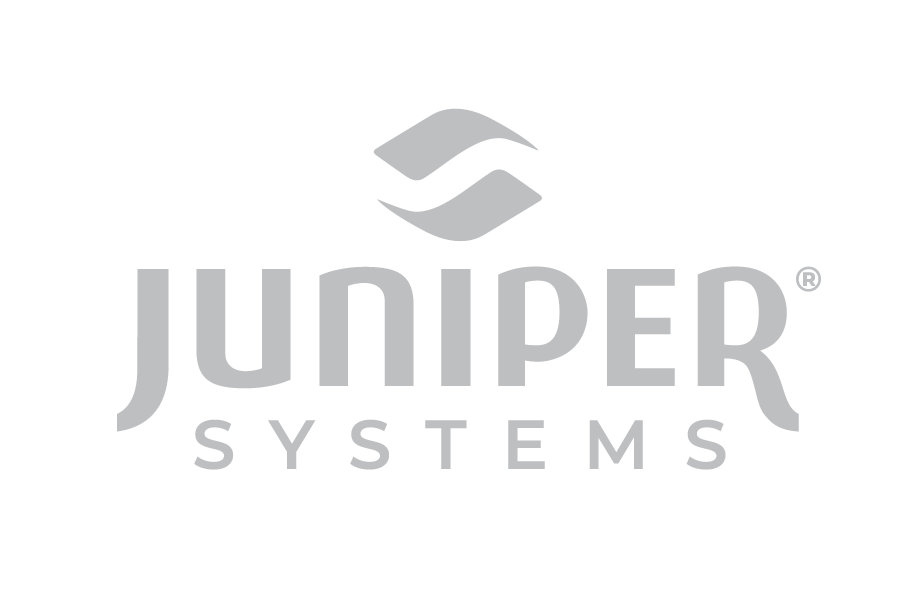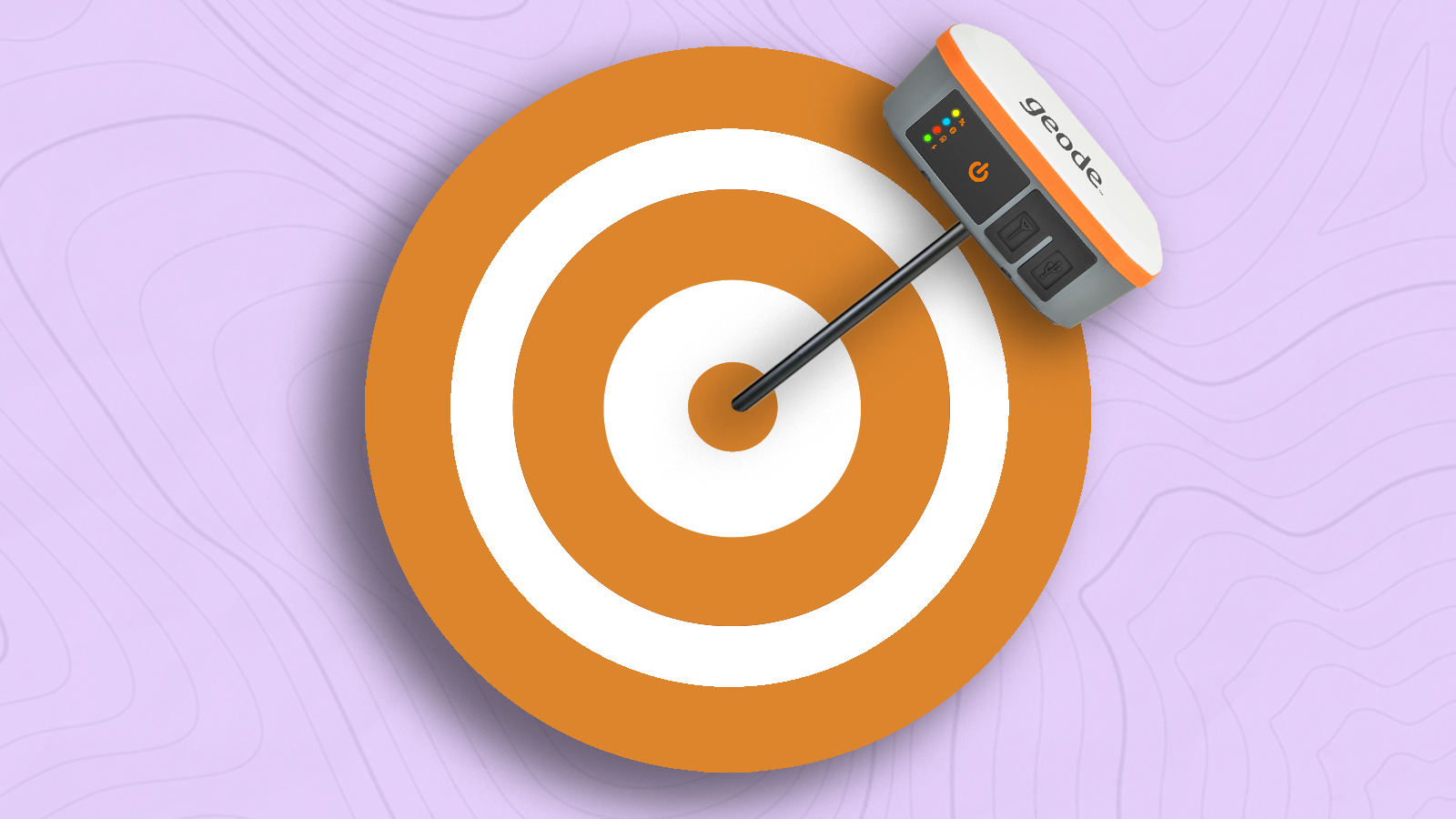
Underneath the concrete jungle, there’s more jungle – an underground network of buried electrical, water, gas, communication, and sewer and storm utilities that a company called Ground Penetrating Radar Systems, or GPRS, sets out to find.
GPRS uses the Geode Sub-meter GPS Receiver to map utility locations after its workers have used various scanning and detection techniques to unearth buried infrastructure without lifting a shovel.
“It’s the easiest way we’ve found to give our clients a map of utilities and other underground infrastructure,” said Jamie Althauser, a training and quality control director at GPRS. The Geode is a huge upgrade from their previous GPS receiver, he added.
The Geode can be mounted above his team’s head, unlike handheld units where bodies can block satellites, he said. And they can use any data collection app they want, allowing his team to see their position and work in real-time on Google Maps. “Before switching to the Geode, we would collect all of the data and just hope it worked out at the end,” Althauser said.
The cost is better, too.
“We were buying a used receiver for twice the price of a brand new Geode,” he said. And now we have the option to integrate the Geode with our other equipment using Bluetooth®.”
The world of positioning data has rapidly evolved in the past five years. Professionals and amateurs have access to increasingly accurate GPS data as costs plunge from astronomical to affordable.
And Juniper Systems hit a cost-accuracy bullseye with the Geode.
“The Geode was built to provide the accuracy needed for most jobs that require professional mapping applications,” said John Florio, Juniper Systems’ Geode product manager and geospatial account manager. “It delivers professional-grade accuracy in a rugged package at an affordable price. Other positioning systems just can’t check all of those boxes.”
There are more accurate GPS receivers. There are cheaper GPS receivers, too. Why shouldn’t positioning experts and amateurs buy those options?
The big picture: Cheaper GPS receivers won’t provide users with meaningful GPS data and hyper-accurate receivers are prohibitively expensive and usually unnecessary for GIS mapping.
- “It’s important to know the price difference between the professional-grade Geode and consumer-grade devices is relatively small,” Florio said. “Some consumer devices are marketed for professional mapping applications, but, often, they misrepresent their devices’ accuracy. Field professionals around the world vouch for the effectiveness of the Geode.”
- Competing products at the same price are only half as accurate as the Geode. “We’re very competitively priced just on accuracy,” Florio said.
- Competing products of the same accuracy cost hundreds of dollars more than the Geode. Plus, they don’t include the Geode’s ruggedness and versatility with outside applications. “Those qualities are unique to the Geode,” Florio said.
- Mapping professionals, Florio said, should consider how a company talks about accuracy: “Companies should be quick to tell you what standard they use to determine accuracy,” he said. “It’s not enough to say ‘sub-meter’ or ‘sub-foot.’ How often is the data sub-meter? If you look closer, you might find a product is only ‘sub-foot’ 65 percent of the time. What are professionals supposed to do with the other 35 percent of data? Throw it out? Try again?”
- The Geode is accurate to fewer than 60 centimeters 95-98 percent of the time at 2DRMS, or twice the distance root mean square. That means around 95-98 percent of the time the Geode offers better than 60-centimeter accuracy. The Geode is accurate to fewer than 30 centimeters RMS around 67 percent of the time. Though, 2DRMS is a truer estimate of field performance for GPS devices.
- Many competitors use the RMS measurement when talking about their products’ performance, despite the measurement only addressing 67 percent of the collected data. “This looks good on paper, but doesn’t reflect the user’s experience,” Florio said. “We prefer to use the conservative estimate. That way our claims are matched in the field.” Some competitors use a less common, less accurate measurement called CEP, or circular error probable. With CEP, only 50 percent of the data falls within the accuracy claim.
Higher accuracy receivers than the Geode get incrementally better while prices increase exponentially.
- “As accuracy goes up from the Geode, pricing goes up almost exponentially,” Florio said. “A doubling of accuracy could mean a three- to four-time multiplier in price.”
- From sub-foot to four-inch accuracy, price increases three to four times. From four-inch to sub-inch accuracy, price increases an additional five or more times.
Why don’t most GPS use cases need to be more accurate?
The big picture: There are few things that most mapping professionals need to identify and position inside a real-world GPS coordinate that are smaller in size than the accuracy of the Geode.
- Higher accuracy GPS applications require a different type of tool. For example, land surveying, construction, and water mains and valves need decimeter (a decimeter is four inches) or sub-inch accuracy.
- Otherwise, most GIS mapping activities identify assets that are larger in size than the accuracy of the Geode. So, most jobs don’t need more accuracy than the Geode.
- “While some people may desire higher accuracy, more accurate data really isn’t applicable to the questions they’re asking of the data,” Florio said.
Why is GPS technology marching forward?
The big picture: The cost and size of advanced GPS antennas and processors are dropping precipitously. And in conjunction with advancing aerial image quality, mapping data is becoming more accurate.
- Mapping accuracy has been boosted by its symbiotic relationship with aerial and satellite imagery.
- As satellites and airplanes take better images of the world’s landscapes, mapping data and technology have tried to keep up. Satellite images that once displayed the detailed world with one earth-colored pixel for every six meters are being replaced with higher resolution images – some which detail every six inches with a pixel.



The final word: “The Geode is a good value for your dollar,” Florio said. “It gives professionals incredible bang for their buck.”
- “It’s durable, meaning work crews can trust it in the field. It can withstand blistering heat and frigid cold. And it’s rated IP68, meaning the Geode is waterproof and dustproof,” Florio said.
- “It’s compact. The Geode has everything built inside its rugged body – from the receiver to the antenna and battery,” Florio said.
- “It has application and operating system versatility. Professionals can use Android, Windows Mobile, and Windows 10-based applications to work. They’re not locked into one company’s hardware, software, or processes. They can change as needs change. That can be a powerful cost-saving feature, and it allows unique flexibility for the user,” Florio said. (With a third-party accessory, the Geode works with iOS.)
- “It’s easy to use. Professionals and work crews can easily learn how to use the Geode. Users won’t spend a lot of time or money on training or adjusting settings. You can get to work right away – maximizing profit and providing quality data,” Florio said.
For more information about how you can affordably improve your GPS and GNSS data with the Geode Sub-meter GPS Receiver, call us at 435-753-1881 or email sales@junipersys.com. Visit us online here.

